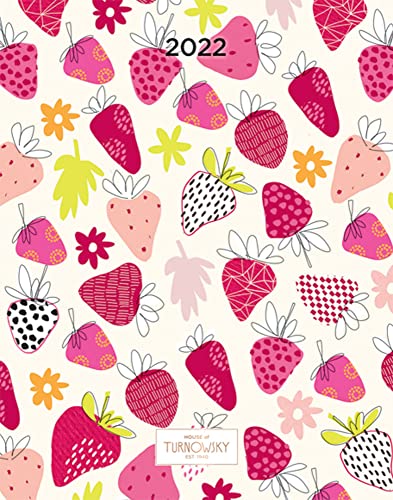There’s something magical about a play tent. It sparks creativity and transforms any room into an enchanting hideaway. I remember the joy on my kids’ faces the first time they crawled into a cozy fabric tent. It was their secret space for adventures, storytelling, and quiet moments away from the world.
Overview of Fabric Play Tents
Fabric play tents serve as magical spaces that spark imagination and foster creativity in children. These charming structures offer a cozy hideaway, perfect for adventures, reading, or simply enjoying a moment of peace. I remember when my kids first discovered their tent; they transformed it into a spaceship one minute and a castle the next.
Constructing a fabric play tent involves using lightweight materials, making it easy for kids to move and rearrange as they please. Common fabric choices include cotton and canvas, both durable yet soft, ensuring comfort during play sessions. Incorporating vibrant colors and patterns can further enhance the tent’s appeal, aligning with children’s lively personalities.
Setting up a play tent indoors or outdoors creates an inviting atmosphere. I often find that when we pitch our tent in the backyard, it becomes a perfect spot for summer picnics or stargazing at night. The versatility of a fabric play tent allows for year-round use, adjusting to different seasons and activities.
With a fabric play tent, parents and children can engage in various activities together. From storytelling to arts and crafts, the tent becomes a versatile hub for learning and bonding. Making a fabric play tent not only provides a special space but also creates lasting memories for kids and their families.
Benefits of Making a Fabric Play Tent for Kids
Fabric play tents offer several benefits that enhance children’s experiences. They create special environments fostering creativity and imaginative play.
Promotes Creativity
Creating a fabric play tent encourages kids to explore their artistic sides. The process of designing their space allows them to choose colors, patterns, and decorations. When kids participate in this creative process, they develop skills in spatial awareness and design. Adding personal touches, like drawings or stickers, transforms the tent into a unique masterpiece that reflects their personality.
Enhances Imagination
A fabric play tent acts as a blank canvas for a child’s imagination. Inside, kids embark on countless adventures—from becoming explorers in a hidden jungle to hosting tea parties in an enchanted castle. The versatility of the space empowers children to invent their own stories and scenarios, helping them grow socially and emotionally. As they engage in role-playing, they build skills like problem-solving and cooperation while deepening their imaginative play.
Materials Needed for the Project
Creating a fabric play tent for kids requires some specific materials. Below is a list of essential items that will help you complete the project successfully.
Fabric Options
- Cotton fabric: Lightweight, breathable, and available in various colors and patterns, perfect for comfort and creativity.
- Canvas: Durable and robust, ideal for outdoor use, and stands up to rough play.
- Sheer fabric: Adds a whimsical touch and allows light to filter in, creating a magical environment.
- Fleece: Provides warmth and softness, making it a cozy option for colder months.
Additional Supplies
- Tent poles: Sturdy poles, such as PVC or bamboo, provide the framework; options include multiple sizes for various tent heights.
- Clips or pins: Use these to secure the fabric to the poles, ensuring stability; fabric clips or alligator clips work well.
- String lights: Enhance the atmosphere with battery-operated string lights, making the tent feel enchanting.
- Decorative elements: Include fabric paint, pom-poms, or ribbons for personalization; kids love to add their creative flair.
- Sewing supplies: Gather thread, scissors, pins, and a sewing machine or needle for assembly; these tools simplify the construction process.
Step-by-Step Guide to Making the Tent
Creating a fabric play tent is an engaging project that’s perfect for weekends or crafty afternoons. Follow these steps to build a cozy and imaginative space for your kids.
Preparing the Fabric
Choosing the right fabric is essential for durability and aesthetics. I prefer cotton or canvas for their sturdiness and vibrant colors. Pre-wash the fabric to prevent shrinking later. Cut the fabric into desired shapes, typically rectangles or triangles, based on the tent design. For a simple tent, I like a base piece and two side panels. Remember to add extra inches for seams.
Assembling the Tent Structure
For the tent’s structure, I use sturdy tent poles, which can be purchased or made from PVC pipe. Arrange the poles in a triangle or square shape, depending on your design. Secure each pole using clips or pins, ensuring the fabric is taut but not overly tight. If you’re using string lights, weave them along the top edge for a magical touch.
Decorating the Tent
Encouraging kids to personalize their tent adds to the fun. I suggest using fabric paints or markers for kids to create designs on the fabric. Hanging dream catchers or fairy lights makes the tent feel special. Add cushions, blankets, and soft toys inside for comfort. Finally, I like to consider a doorway with a tie-back feature for easy access and a whimsical touch.
Safety Considerations
Safety plays a crucial role when creating a fabric play tent for kids. Ensuring a safe environment helps prevent accidents and enhances enjoyment. Follow these guidelines to keep safety at the forefront during the construction and use of the tent.

- Select Non-Toxic Materials: Choose fabrics and supplies labeled as non-toxic. Avoid harmful chemicals that could irritate children’s skin. Look for certifications like OEKO-TEX or CPSIA to ensure safety standards are met.
- Secure Tent Structure: Ensure the tent’s structure is stable. Use sturdy poles that won’t easily tip over. Check for secure attachments between fabric and poles, as loose connections can lead to collapses.
- Check for Sharp Edges: Inspect all materials for sharp edges or points. Use rounded or softened components to minimize injury risk. Cover any exposed hardware with fabric or padding to provide extra protection.
- Avoid Small Parts: Steer clear of decorative items with small parts that pose a choking hazard. Opt for larger, securely attached decorations to ensure safety during play.
- Monitor Playtime: Supervise young children while they use the play tent. Young kids often engage in active play, so keeping an eye on them helps prevent accidents and ensure safe interactions.
- Ensure Proper Ventilation: Make sure the fabric tent is well-ventilated. Avoid placing the tent in confined spaces to prevent overheating, especially during extended play sessions.
- Maintain Cleanliness: Regularly clean the tent and its components. Dust, spills, and allergens can accumulate. Keeping the tent clean promotes a healthy play environment for children.
- Establish Safe Play Rules: Set clear rules about playtime in the tent. Encourage children to engage in age-appropriate activities, ensuring they respect each others’ space and avoid roughhousing.
By prioritizing these safety considerations, I create a secure and delightful play experience for children, allowing their imaginations to flourish without unnecessary risk.
Conclusion
Creating a fabric play tent for kids has been one of the most rewarding projects I’ve tackled. Watching my children dive into their own little world of adventure and creativity fills my heart with joy. It’s incredible how a simple tent can transform a room into a magical space where stories come to life and imaginations soar.
As they personalize their tents and make them their own, I see them grow not just in creativity but also in confidence. I can’t wait to see what new adventures await in their cozy hideaway. So grab some fabric and get crafting—your kids will thank you for the memories they’ll create!













